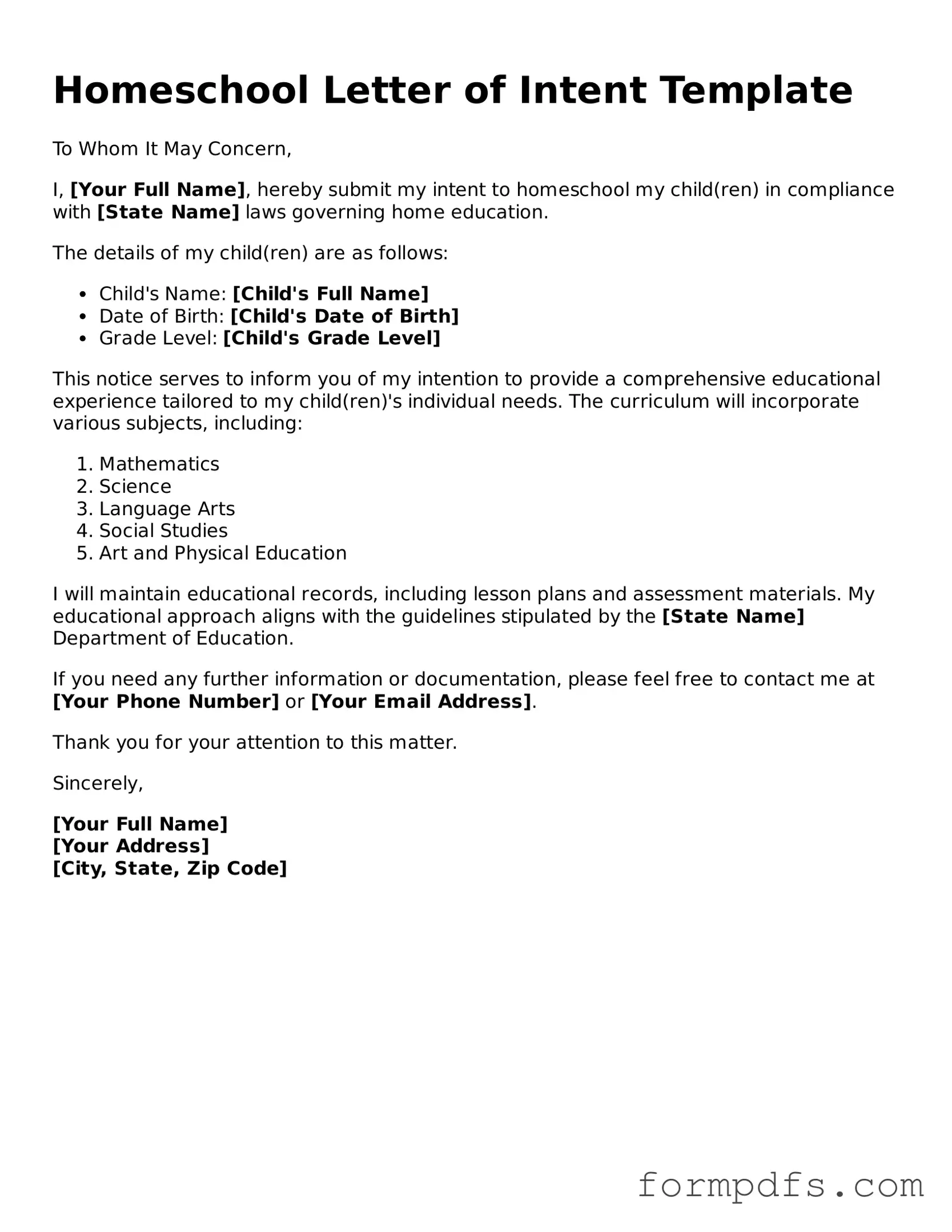What is a Homeschool Letter of Intent?
A Homeschool Letter of Intent is a formal document that parents or guardians submit to their local school district. This letter indicates the intent to educate their child at home rather than in a traditional school setting. It serves as a notification to the school district that the parents are taking on the responsibility for their child’s education.
Who needs to submit a Homeschool Letter of Intent?
Parents or guardians who choose to homeschool their children must submit this letter. It is typically required for children who are of compulsory school age. Each state has its own rules regarding homeschooling, so it’s important to check local requirements.
When should I submit the Homeschool Letter of Intent?
It’s best to submit the letter before the start of the school year or as soon as you decide to homeschool. Some states may have specific deadlines, so be sure to check your local regulations to ensure timely submission.
What information should be included in the Homeschool Letter of Intent?
The letter should include your name, your child's name, and the address where you will be homeschooling. Additionally, you may want to include a statement expressing your intent to homeschool. Some states may require more detailed information, so it’s wise to review your local guidelines.
Do I need to renew the Homeschool Letter of Intent each year?
In many cases, yes. Some states require parents to submit a new letter each year, while others may allow a one-time submission. Always check your state’s regulations to ensure compliance with their requirements.
What happens after I submit the Homeschool Letter of Intent?
After submitting the letter, the school district may acknowledge receipt of your intent. They might provide further instructions or information regarding any additional requirements for homeschooling in your area. Keep a copy of the letter for your records.
Can I change my mind after submitting the Homeschool Letter of Intent?
Yes, you can change your mind about homeschooling. If you decide to enroll your child in a traditional school after submitting the letter, you should notify the school district of your decision. It’s important to follow any procedures they may have for re-enrollment.
